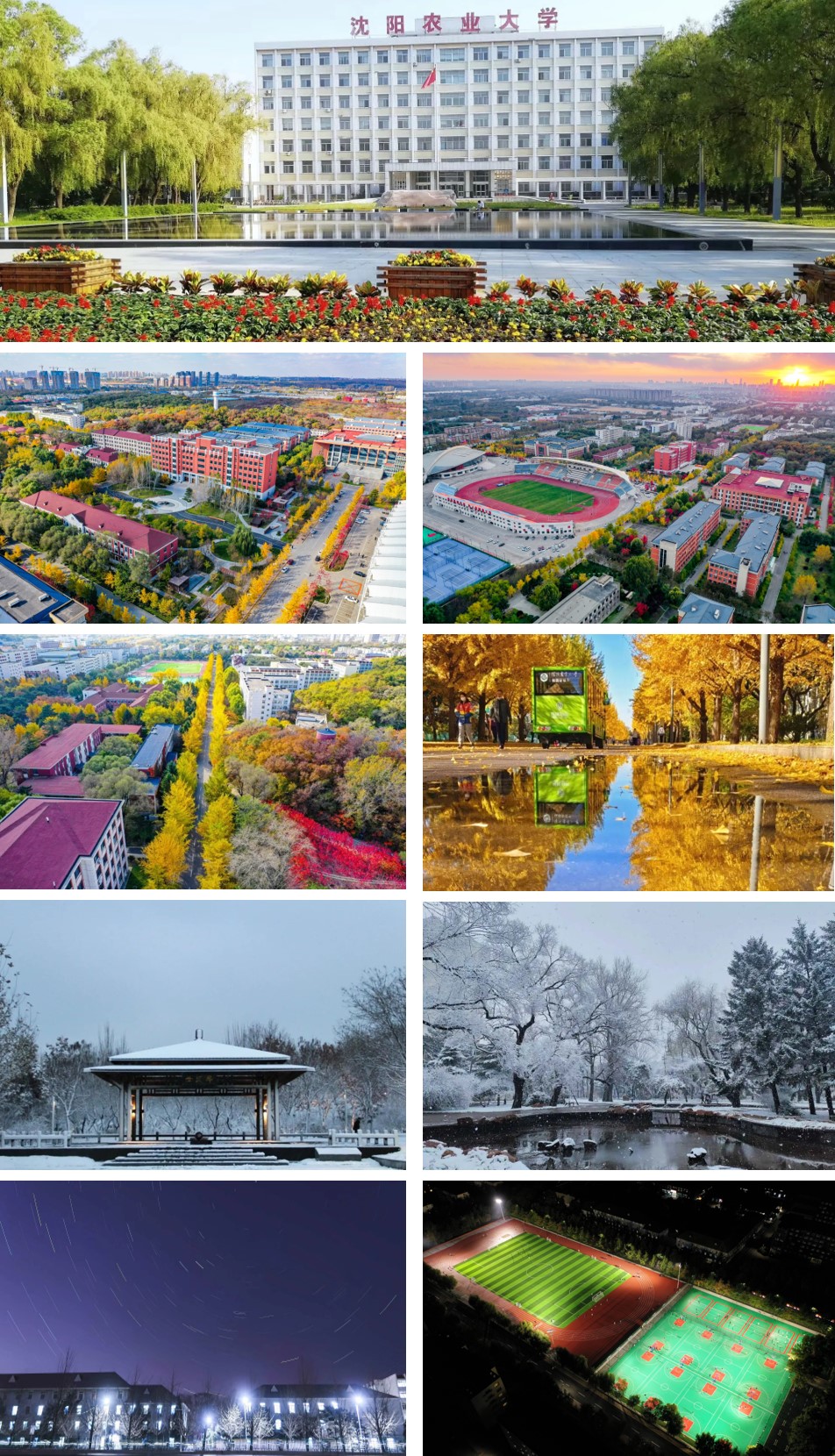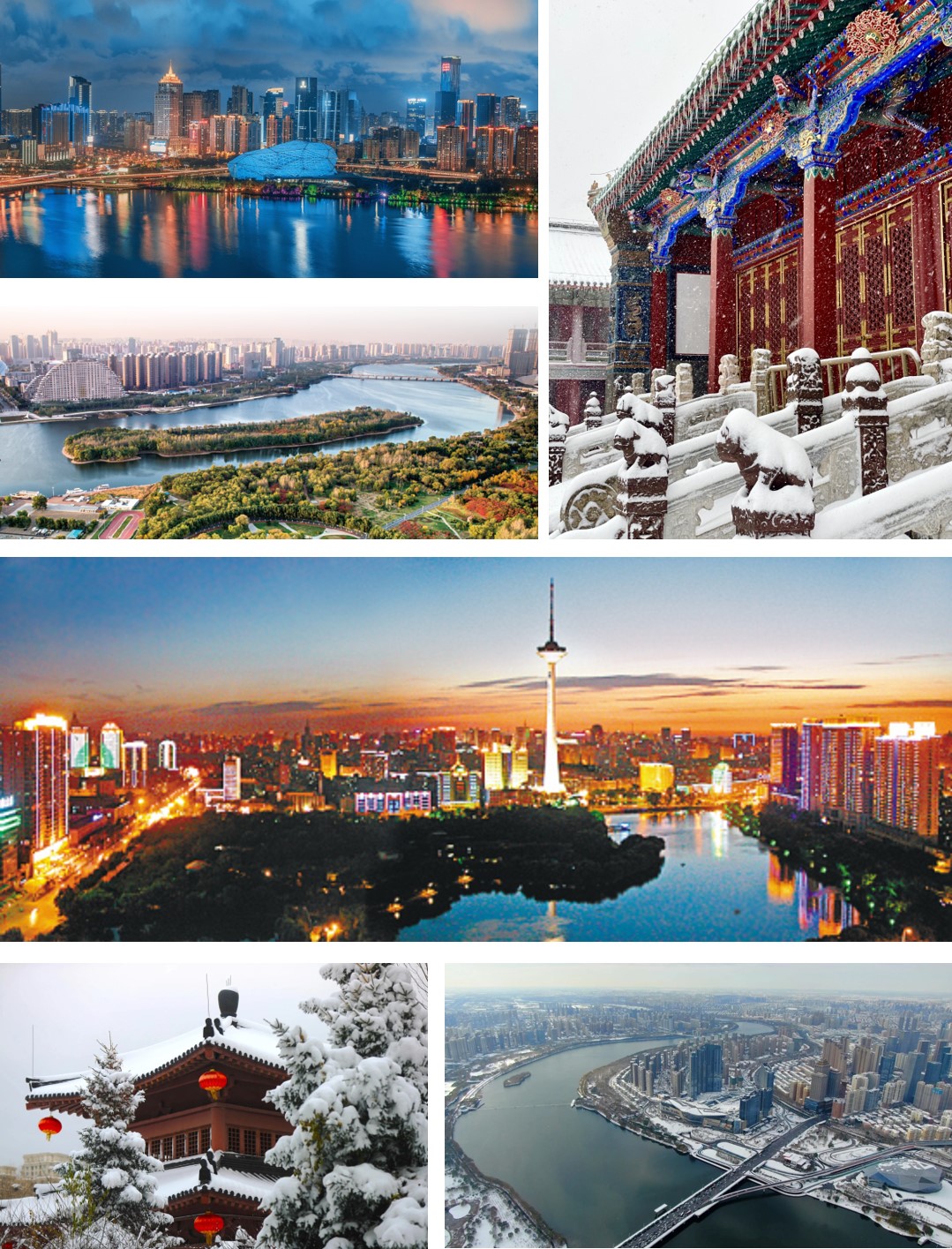Introduction to SYAU

Shenyang Agricultural University (SYAU), jointly administered by national and local governments, is a national key university in China,located in Shenyang, a national historical and cultural city.
With Tianzhu Mountain standing on its north side, the world cultural heritage---Fuling Tomb of Qing Dynastry to its east and Hunhe River to its south, SYAU is situated in the heart of the integrated region linking the two cities of Shenyang and Fushun. Occupying a total area of 10246mu (mu is a unit of area used in China and 1mu is equivalent to around 0.067 hectare) and surrounded with a tranquil neighborhood, a beautiful scenery and a pleasant ecological and cultural environment, SYAU makes an ideal place for teaching, learning and research.
The educational history of Shenyang Agricultural University dates back to the Provincial Shenyang Agricultural School established in 1906. In 1952, during the nationwide adjustment of colleges and universities, Shenyang Agricultural College was founded on the basis of the Faculty of Agriculture from Fudan University and parts of the Northeast Agricultural College. In 1979, it was approved by the State Council as a national key institution of higher education. In 1981, it became one of the first institutions authorized to confer doctoral and master's degrees. In 1985, it was renamed Shenyang Agricultural University, and Comrade Deng Xiaoping personally inscribed the name of the university. In 2000, the university transitioned from being under the jurisdiction of the Ministry of Agriculture to being jointly established by the central and local governments of Liaoning Province, becoming a national key university.
The university has a comprehensive agricultural education and research system. It comprises 16 colleges and 4 teaching departments (centers), with 8 post-doctoral research stations, 10 doctoral program authorization points, 113 master's program authorization points, and 43 undergraduate programs. It boasts 3 national key disciplines, 3 key disciplines under the Ministry of Agriculture, and 1 key discipline under the National Forestry and Grassland Administration. Currently, there are 1,204 full-time faculty members, including 2 academicians of the Chinese Academy of Engineering and 4 recipients of the National Science Fund for Distinguished Young Scholars. The university has a total enrollment of 20,152 students. It has been honored with titles such as National Civilized Unit, National Civilized Campus, one of the 50 universities with typical experience in graduate employment nationwide, National Model Workers' Home, and National Advanced Unit in Degree and Graduate Education Information Work.
Since the 13th Five-Year Plan, the Party Committee of the university has consistently adhered to the guiding principles of Xi Jinping's Thought on Socialism with Chinese Characteristics for a New Era and the spirits of the 19th and 20th CPC National Congresses. It has upheld the comprehensive leadership of the Party over university work, the fundamental task of fostering character and civic virtue, and the principles of distinctive development, connotative development, and high-quality development. Adhering to the philosophy of nurturing through environment, culture, and academia, the university has vigorously implemented strategies focusing on education, research, talent development, and alumni engagement. The entire university community has seized opportunities, boldly reformed, dedicated itself to excellence, overcome challenges, and rapidly developed in all aspects.
Looking towards the "14th Five-Year Plan," the university is progressing towards its goal of becoming a high-level university with "national distinction, Northeastern characteristics, and Shenyang Agricultural quality."
More about SYAU See
Introduction to Shenyang

Shenyang, the capital city of Liaoning Province, is not only the economic, cultural, transportation, and commercial center of Northeast China but also a major industrial hub and historical and cultural city in China. Situated in the southern part of Northeast China and the central part of Liaoning Province, Shenyang boasts abundant natural and cultural resources, holding significant importance in understanding the historical development and cultural characteristics of the Northeast region of China.
The history of Shenyang can be traced back over 7,200 years, witnessing numerous dynastic changes. From the Zhou Dynasty's Yingzhou to the Warring States period's Liaodong Commandery, and from the Han Dynasty's Houcheng to the Liao and Jin dynasties' Shenzhou, the Yuan Dynasty's Shenyang Road, the Qing Dynasty's Shengjing, to the era of the puppet state of Manchukuo's Fengtian, Shenyang finally regained its name after the victory of the War of Resistance Against Japanese Aggression. This historical evolution not only reflects Shenyang's changing status but also mirrors the political, economic, and cultural transformations of the Northeast region of China during different historical periods.
Covering an area of 12,980 square kilometers, with a length of 115 kilometers from east to west and 205 kilometers from north to south, Shenyang is endowed with rich natural resources. It possesses approximately 20 billion tons of coal reserves, around 107 billion cubic meters of natural gas reserves, and 36 mineral resources including iron, bauxite, silica, clay, and limestone. With a current forest area of 353,000 hectares and a forest coverage rate of 27.2%, Shenyang also has abundant water resources, with a total water volume of 29.28 billion cubic meters and 22.86 billion cubic meters of groundwater. Surrounding Shenyang are picturesque landscapes such as Huishan, Tianzhushan, and the flowing Hun River, Liao River, North Sand River, Xinkai River, and Nanyun River.
Shenyang is renowned nationwide as a historical and cultural city and was one of the first batch of excellent tourist cities in China. It boasts over 400 cultural heritage sites including ancient relics, ancient city sites, ancient tombs, and ancient buildings. Shenyang Imperial Palace, with its unique architectural style integrating Han, Manchu, and Mongolian elements, stands as a cultural treasure listed alongside Fuling and Zhaoling in the World Heritage List. Additionally, Shenyang is home to numerous modern historical sites and famous scenic spots such as the Dashaifu, the former site of the Communist Party of Manchuria Provincial Committee, and the September 18th Incident Museum, attracting numerous domestic and foreign tourists.
As the economic center of Northeast China, Shenyang holds significant positions and contributions in industries, science and technology, and education. With a solid industrial foundation, especially in heavy industry and equipment manufacturing, Shenyang also demonstrates vitality in the development of emerging industries. The development of Shenyang not only influences Liaoning Province but also plays a crucial role in the economic and social development of the entire Northeast region and even the whole country.
More about Shenyang see
https://www.shenyang.gov.cn/english/
http://wb.shenyang.gov.cn/English/